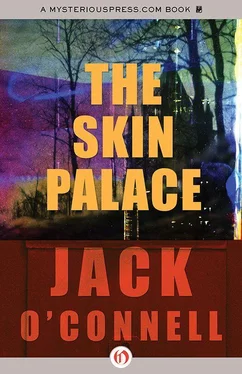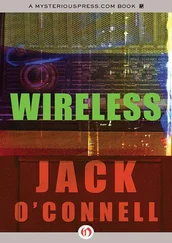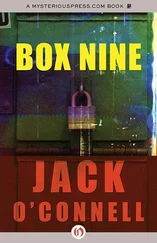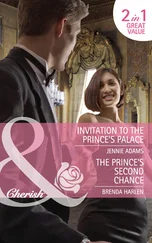She keeps herself from blurting out the immediate yes that’s answered that question her entire life. She says, “What’s playing?”
He holds up his satchel and says, “How about the suppressed cut of The Wizard of Oz”?
She stops walking and Propp smiles and looks at her with raised eyebrows, a kind of challange, an invitation to doubt him.
“Give me a break,” she says.
He takes a few steps back, opens the satchel and pulls up a dull silver film canister, just a flash of it, then drops it back down into the bag.
“Suppressed?”
“You never heard of this?” he says. “What kind of film animal are you?”
“The Wizard of Oz?”
His shoulders slump, he swings his head in the direction of the alley’s mouth and they start walking again, more quickly this time.
“It was the first week of November, 1938. There was some unspoken tension on the set, you know, with Victor Fleming taking over for George Cukor. And this was after Cukor had already replaced Richard Thorpe. You add to that the concern about the aluminum powder—”
“Aluminum powder?”
“They’d had to rush Buddy Ebsen to the hospital. Found out he was having allergic reactions to the Tin Man makeup. They had to replace him with Jack Haley. C’mon, Sylvia, you know all this, right?”
She just gives him a blank stare.
“Anyway, the first scene Fleming shoots is the yellow brick crossroad bit where Dorothy meets the Scarecrow. Only the raven they had sitting on Bolger’s shoulder got loose and started flying around the studio. Bergswich, the unofficial MGM animal expert — he was really just an assistant electrician — he wasted a whole day trying to catch the damn bird. So, you can imagine, right, when they finally get down to filming that scene the actors are a little tense, okay? And things got a little out of hand at one point.”
“What do you mean?” she can’t help asking.
He lifts the satchel up in the air.
“Supposedly,” he says, “they burn the offensive scenes. Only somebody, maybe Mervyn LeRoy, maybe Louis Mayer himself, pockets the cut stock and it sits for years in some Beverly Hills vault. But like everything else, Sylvia, eventually it surfaces again. Makes it out onto the gray market. I’ve had my reel for over a decade now.”
This one she just can’t believe. “What could possibly be offensive about The Wizard of Oz?”
“Any number of things. But this had to do with Dorothy’s relationship with the Scarecrow. Wait till you see what was cut from the dance scene. That yellow brick road was on fire. They—”
“No,” she says and stops as they emerge back out on Voegelin.
“What?”
“You’ve gone too far, Propp. There was nothing erotic or sensual or in any way sexual about Judy Garland’s dance with Ray Bolger. There just wasn’t.”
“Not in the print you’ve seen, no.”
“Not in any print.”
He waits a few seconds, biting off a smile, seeming to study her face, the ever patient patriarch.
“Why, Sylvia?” he finally says. “Because you don’t want it to be? Because you’ve always looked at that moment in that movie, that dance, that image,” emphasizing the syllables until they sound foreign, “in a very specific way. And you don’t want to believe there could be another way to look.”
“That’s not it at all,” she says. “It’s because your story isn’t rational. It doesn’t fit the context of the movie. There’s no reason why they would have filmed that kind of thing. It just didn’t happen.”
“But it did, Sylvia,” Propp says. “And if you want to come to the Ballard with me, they’ve got a sixteen millimeter projector just waiting to be used.”
They stare at each other until Sylvia says, “All right, Propp. You show me,” and they turn left down Voegelin and head toward the Canal Zone.
The old Ballard Theatre sits down on Bonnefoy Drive sandwiched betweeen a former paper mill and a nonfunctioning electric company transformer station. It’s always been one of the smaller cinemas in town, with less than a hundred seats, but from the start it had a subtle elegance to it. Nothing overwhelming like the Skin Palace. More a quiet charm, an unspoken confidence and a discreet style, from the amber glow of the wooden walls to the coziness of its mini-balcony. There was something about the way the Ballard offered homemade quilts to every customer when the quirky heating system failed every January. But most of all there was the silent and graceful demeanor of the eternal usher, a small, ghost-faced, foreign-looking man in a black suit who remained at the Ballard no matter how often it was bought and sold. The rumor has always been that he lived in the theatre and never went outside. He reminded some patrons of a refugee funeral director, but Sylvia always thought of him as more of a secular monk in the celluloid faith.
The Ballard has changed hands half a dozen times in the last twenty years. Something about the building seems to attract dedicated film specialists whose business acumen is eccentric at best. In the past decade the theatre has been known by a variety of names. There was The Kinetoscope, which revived an endless number of pre-talkies until the IRS rode into town and padlocked all the doors. There was Dragonsbreath, which was dedicated to the martial arts film in all its cheesy glory and blew most of its receipts on a ridiculously expensive, life-size, full-body sculpture of Bruce Lee in a midair assault. There was a single summer of Ciné Flesheater that almost managed to display every variation of the B-budget zombie flick, but tended to dwell on the Spanish-Italian subgenre. And there was The Jerry Lewis House of Mirth which was able to roll everything from My Friend Irma through The King of Comedy before the proprietor retired to France, a happy, if bankrupt man.
The Ballard’s last incarnation was as The Anne Frank Cinema. And the ’59 version of The Diary of Anne Frank was the first in a series of holocaust movies Sylvia watched down here, followed by Genocide, The Garden of the Finzi-Continis, Sophie’s Choice, The Night Porter, Playing For Time, The Last Metro, Kapo, Diamonds of the Night, The Wannsee Conference, Judgment At Nuremberg, In a Glass Cage, Shoah and Hotel Terminus. She doesn’t know exactly what did in the Anne Frank, but at the final screening, a double bill featuring The Sorrow and the Pity and Night and Fog, the only two people in the place were she and Shel Singer, the neighborhood mayor of the Jews. At intermission, Mr. Singer got up from his seat in the last row and sat next to Sylvia, brought her a box of popcorn. For the last hour of the Anne Frank Cinema’s life, Shel held Sylvia’s butter-streaked hand, nothing erotic in the act, just a touch, human flesh brought together for a short time. Then as the credits rolled, Mr. Singer got up and left without a word. And that night they bolted the doors of the Ballard and cleared the marquee.
Now, six months later, the Loftus Brothers have decided to take a stab at the movie business. Tonight, the front of the Ballard sports a new, pricey sign made up of hundreds of blinking lightbulbs that are patterned to read Impact: The Car Crash Cinema.
“I guess the idea,” says Propp from the roof of the building looking down over the transformer lot next door, “is they’ll edit out everything but the crash scenes. They’ll dump the rest of the movie and just leave the smashups. If there’s a good chase scene preceding the crash, they might leave it in. But if a chase doesn’t end in a crash, no good.”
“They’ve got a lot of material to work with,” Sylvia says.
Propp nods, kneels down and starts to open a skylight. “And you’re probably just thinking of theatrical releases, right?”
Читать дальше











